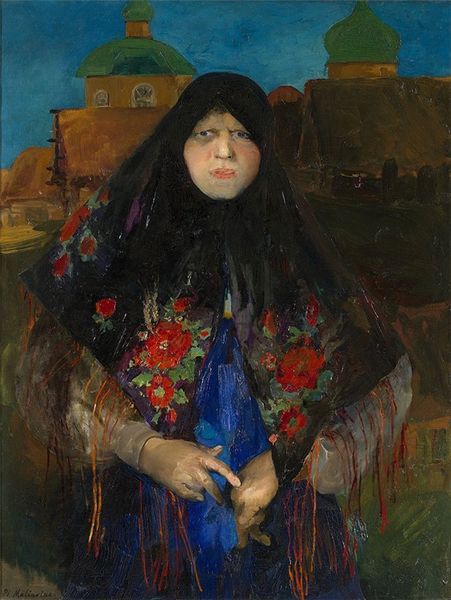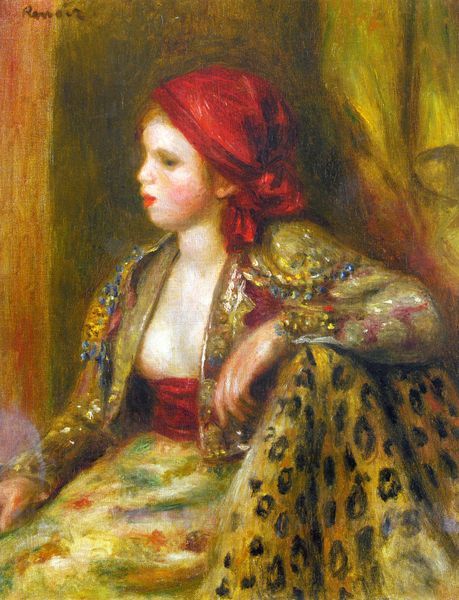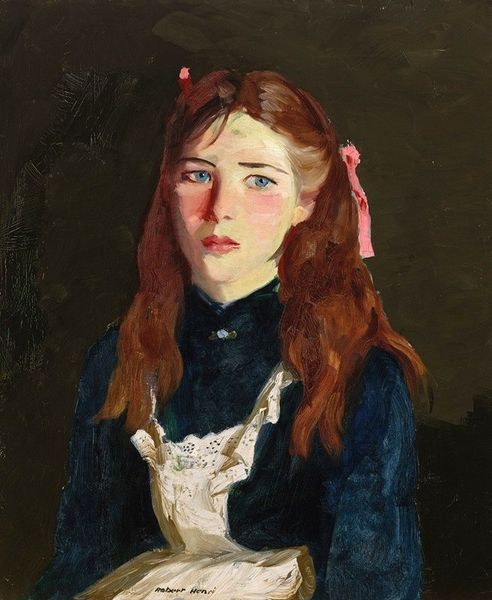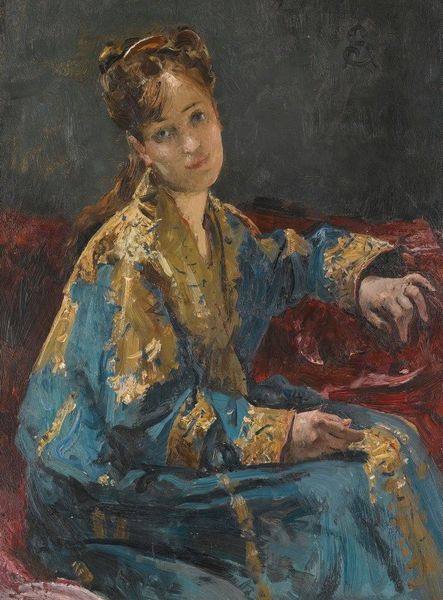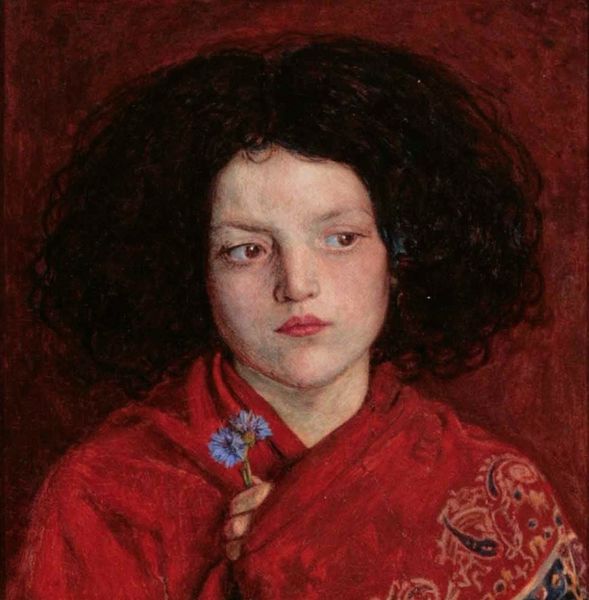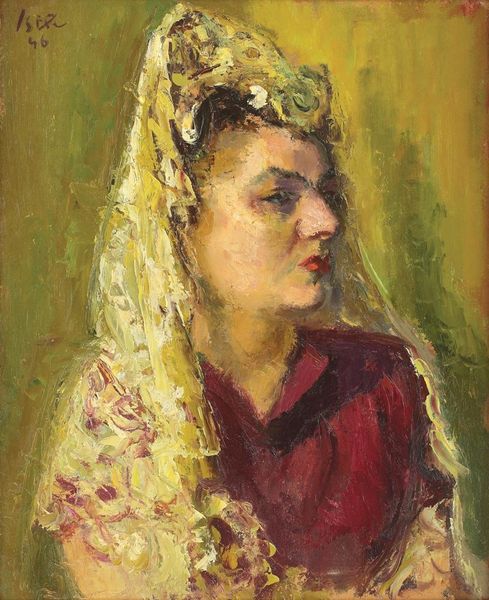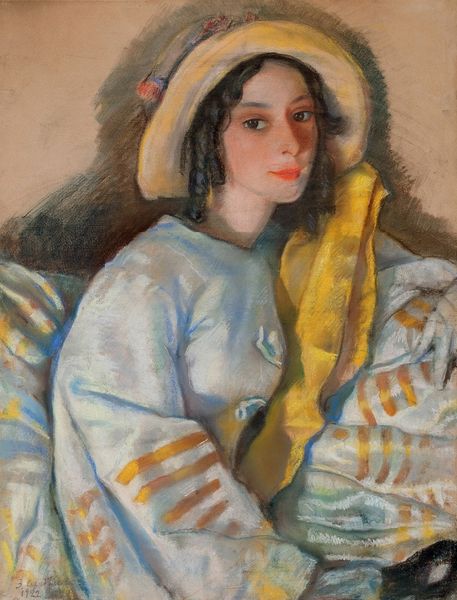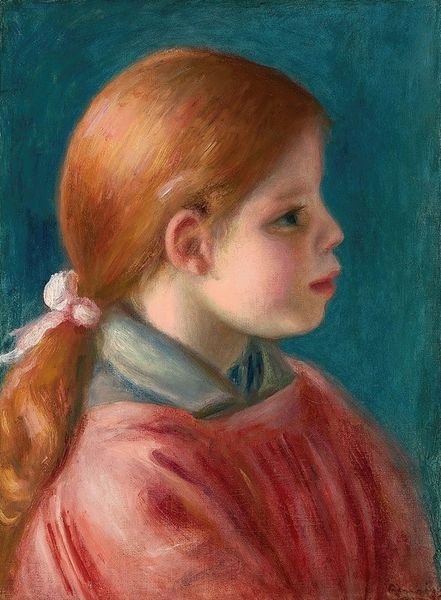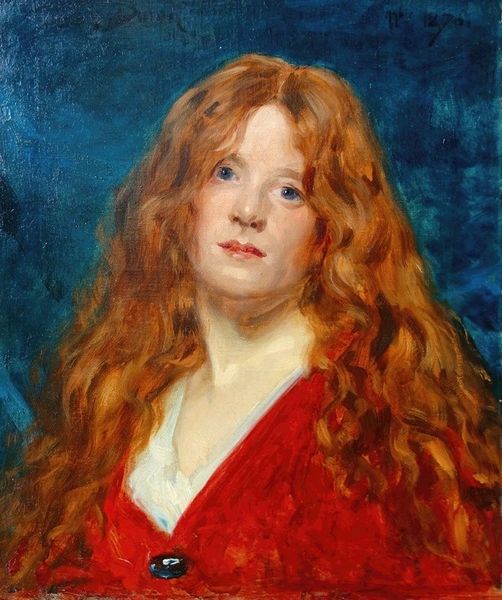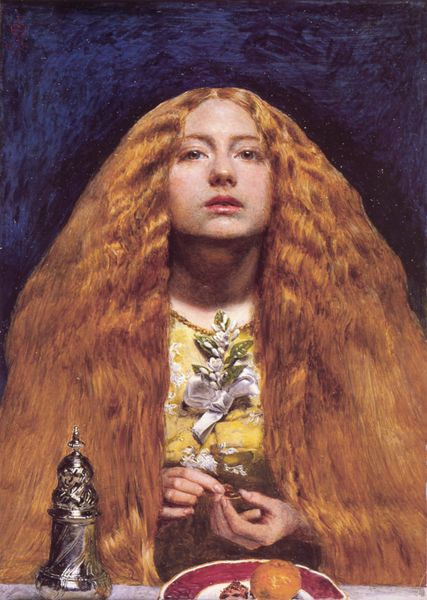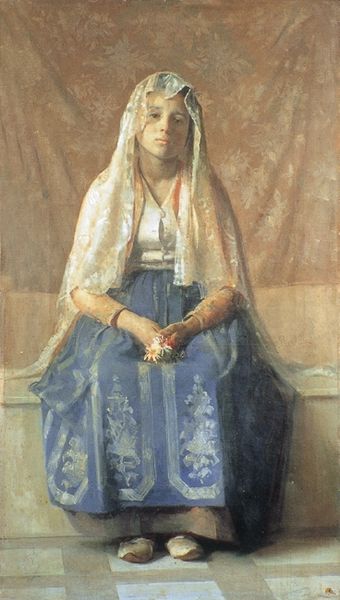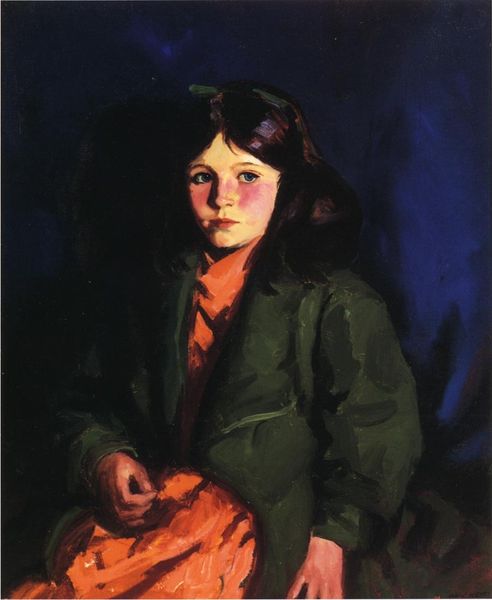
Copyright: Public Domain: Artvee
Editor: This is Konrad Mägi’s "Norra tütarlapse portree," painted in 1909 with oil on canvas. It’s a portrait of a girl with striking red hair against a vividly patterned backdrop. I'm immediately drawn to the contrast between her placid expression and the almost chaotic energy of the colors behind her. How do you interpret this work? Curator: Well, it's important to understand the social and political landscape of early 20th century Estonia, where Mägi was working. He often portrayed individuals seemingly at odds with their environment, reflecting the tensions between tradition and modernity that permeated the era. Consider her gaze: is it defiance, resignation, or something more complex? What does that communicate about societal expectations placed on young women at the time? Editor: That's a good point. I hadn't considered the painting in the context of early feminism in Estonia. The patterned background, almost overwhelming in its detail, now feels like a symbol of the complex world closing in on her. Curator: Exactly! And let's not ignore the way Mägi uses color and light, which evokes questions about Estonian identity at a pivotal time. In that light, what do you make of her adornments? Editor: I guess her bows and lace collar point to a certain degree of cultural or economic position within her community, in a world of tradition in the face of an evolving modernism. Curator: Precisely! So how might we, with this new perspective, view her role in that society, or potentially her rebellion against it? Editor: It gives me a richer understanding of the complexities of this work and its setting! I’m definitely seeing it with new eyes now. Curator: And that's the power of contextualizing art—to make us rethink our own perspectives on history, culture, and identity.
Comments
No comments
Be the first to comment and join the conversation on the ultimate creative platform.
